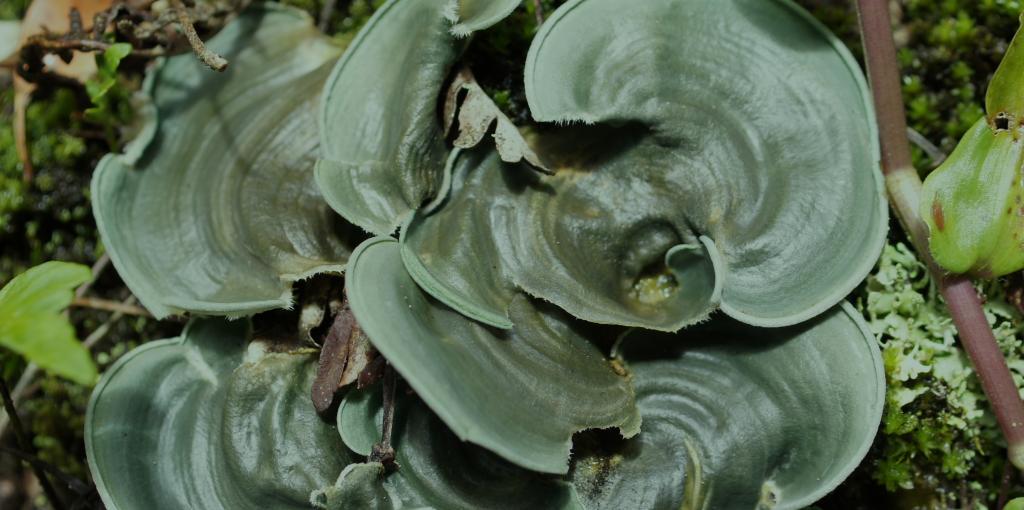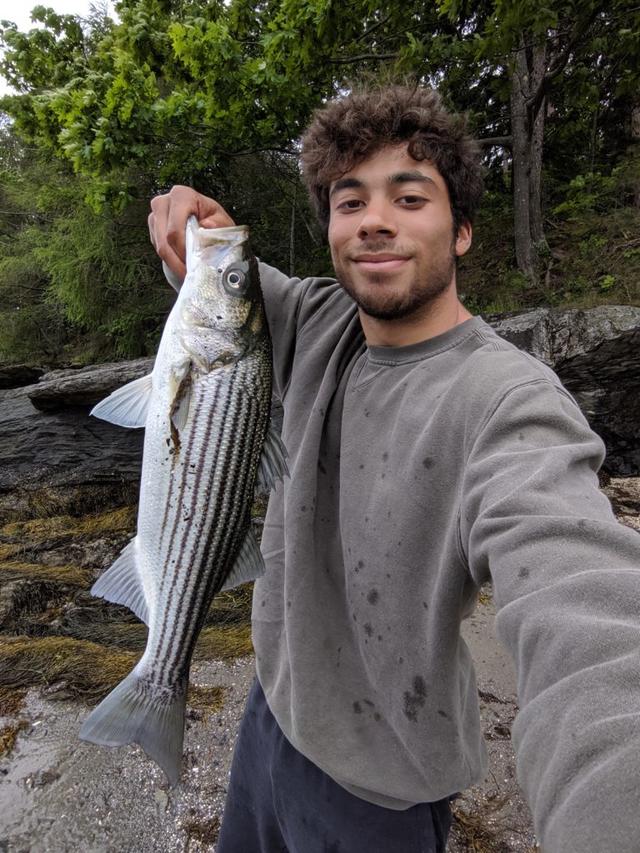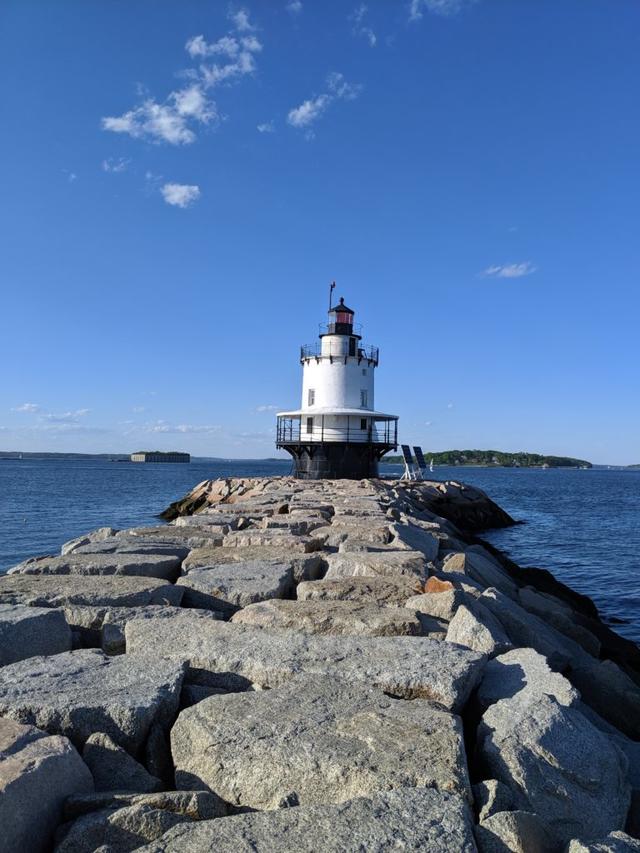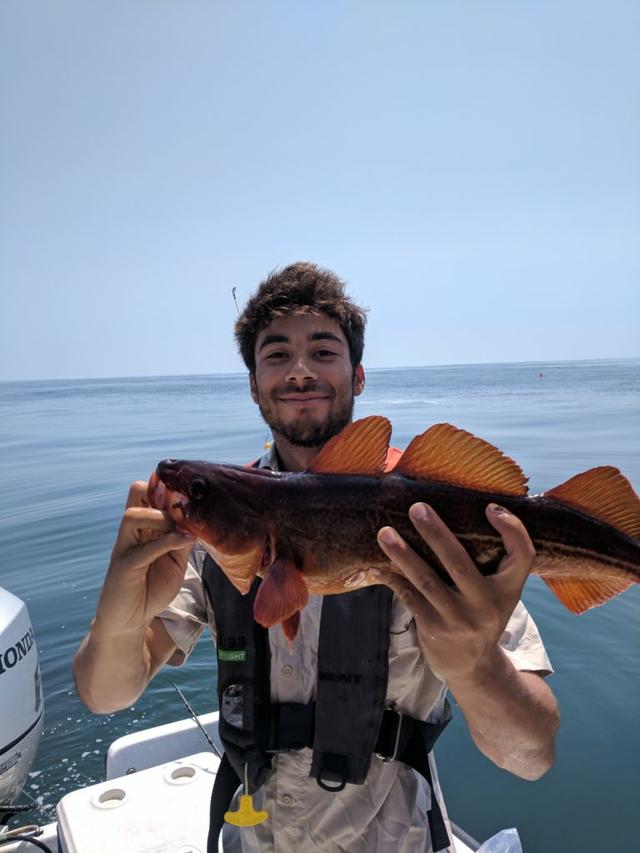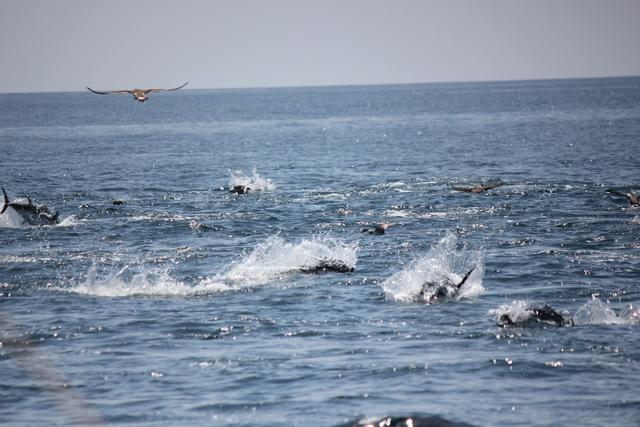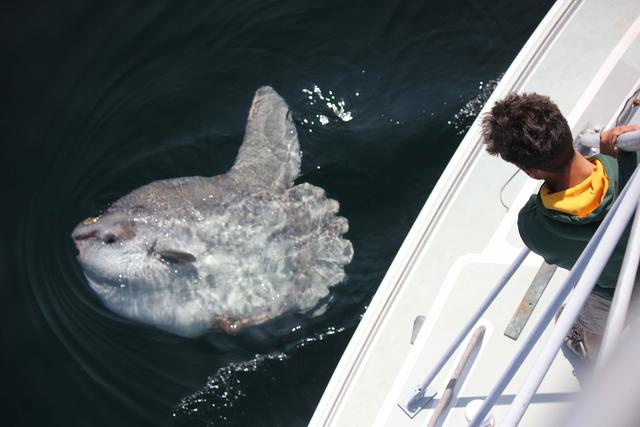Admission CTAs
Student Story: REU Internship at the Gulf of Maine Research Institute
Research Experiences for Undergraduates (REU)
Environmental Science and Policy undergraduate student Keith Keel discusses his summer research experience with the Gulf of Maine Research Institute (https://www.gmri.org)
Story and images by Keith Keel (September 2019)
Video (February 2020) produced by Chelsea Gray, with the support of Potomac Environmental Research and Education Center (https://perec.gmu.edu)
Over the summer , I was fortunate enough to intern at the Gulf of Maine Research Institute through the Research Experiences for Undergraduates (REU) program funded by the National Science Foundation. The Gulf of Maine Research Institute is a nonprofit in Portland, Maine that focuses on ecosystem-based marine research, youth education, and community outreach. As an REU intern, my primary objective was to carry out an independent research project. My research was focused on assessing juvenile fish abundance in eelgrass relative to less complex habitats using underwater video.
During the time when I wasn’t working on my independent research, I was able to have some memorable experiences. I travelled 30 miles offshore on a tuna boat and saw whales, huge schools of bluefin tuna, and sharks. I caught baby lobsters by hand while snorkeling. I witnessed hundreds of river herring swim upstream to spawn. I also got to work with some amazing researchers. In addition to these awesome experiences, my internship provided me with preparation for graduate school and my future career as a scientist. It was a summer that I will never forget.
I’d like to give a huge thank you to Dr. Cindy Smith and Chelsea Gray for helping me land this opportunity.
Gallery Notes:
- A striped bass (Morone Saxatilis) I caught for our “Snap a Striper” citizen science project. Pictures of striped bass were submitted from citizens along the Southern Maine coast and were used to model striped bass migration patterns.
- The Maine coast is home to many lighthouses, this is the humble Spring Point Light. This lighthouse is located behind the Southern Maine Community College Campus, which was home to our wet lab where live lobsters were kept for research. Many fish were also caught on the jetty leading up to the lighthouse, some for science and some just for fun.
- This is an Atlantic cod (Gadus Morhua) that I caught for research purposes. We wanted to see how lobsters would respond to the fish’s scent cues. Those who are familiar with Atlantic Cod may notice that this one looks quite red. This is because this fish is actually a different ecotype that gains color from its crustacean rich diet.
- A bluefin tuna (Thunnus Thynnus) “blitz”. Hundreds of bluefin tuna are attacking smaller baitfish offshore in the Gulf of Maine. The seabirds (shearwaters) are quick to feed on injured baitfish at the surface of the water.
- This odd-looking creature is called an ocean sunfish (Mola mola). They are a common sight offshore in the Gulf of Maine. They come up to the surface of the water to “sunbathe” and are often hit by boats accidentally. They can weigh up to 2,000 pounds and are one of the most massive bony fish species.
- The ocean sunfish (Mola mola) from another angle.
